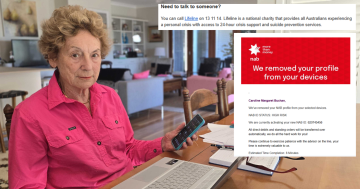Remember the old expression ‘a fool and his money are easily parted’? Paul Clitheroe* is not so sure it holds true these days. He says plenty of investment scams – especially those involving crypto, can be very hard to pick.
 Australians lost more than $701 million to investment scams last year, up 135 per cent from 2020.
Australians lost more than $701 million to investment scams last year, up 135 per cent from 2020.
The main driver of these losses has been cryptocurrency scams, where losses increased by a massive 270 per cent over the past year.
Consumer watchdog – the ACCC, expects losses to crypto scams to increase further in 2022.
Despite the potential to be fleeced, research by Roy Morgan shows that over one million Australians own cryptocurrencies such as Bitcoin, Ethereum, Ripple and others.
According to investment regulator ASIC, crypto scams broadly fall into three categories:
- Scams where you think you’re investing in a genuine asset but it’s a fake crypto exchange, website or app,
- Fake crypto tokens that look legitimate but are really involve money laundering using crypto, and
- Scams that use crypto-assets to make a payment.
If it sounds confusing that’s because crypto scams can be very sophisticated.
It can be hard to pick the real deal from a fake.
Worse still, people don’t just lose money.
ASIC advises that when Australians fall victim to scams it can cause emotional stress and even damage relationships.
It can mean a heavy price for getting it wrong.
With this in mind, ASIC’s investigators have put together a ‘top 10’ list of signs that you could be facing a crypto scam:
- You receive an offer out of the blue
- You see a celebrity advertisement that is actually a fake
- A romantic partner you only know on-line asks for money in crypto
- You get pressured into transferring crypto from your current exchange to another website
- You’re asked to pay for a financial service with crypto
- The app you’re using or directed to isn’t listed on the Google Play Store or Apple Store
- You need to pay more to access your money
- You are promised guaranteed returns, or free money
- Strange tokens appear in your digital wallet
- The provider withholds investment earnings for ‘tax purposes’.
If you think you’ve fallen prey to a crypto scam, ASIC says it’s important to act quickly.
Don’t send any more money, and ask your bank to stop any further transactions.
Admitting you’ve been scammed is never easy.
But warning your family and friends can mean they keep an eye out for potential follow-up scams.
*Paul Clitheroe is chairman and chief commentator of Money magazine and is regarded as one of Australia’s leading experts in the field of personal investment strategies and advice.
This article first appeared at investsmart.com.au.











